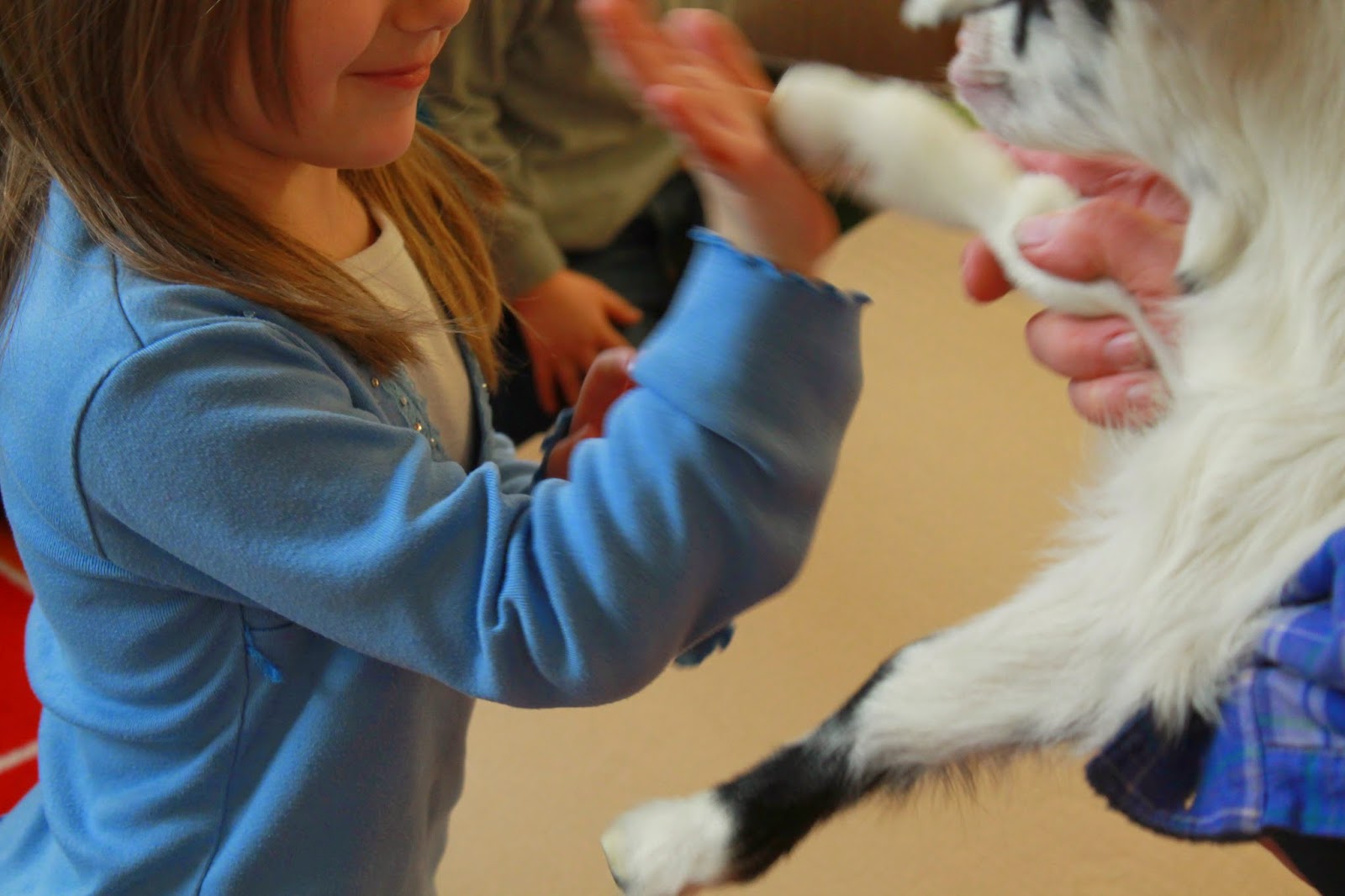Our ECE gets some Goat Love.
Action shot...I get nibbled on the chin by a loveable goat baby!
Each child got a goat high-five when it was time to say goodbye.
One of the benefits of teaching at a rural school (and of living on a hobby farm) is that there are always so many creatures at hand to be brought in to the classroom. My principal once joked that she was going to have to start patting me down at the door because of my habit of bringing animals into the classroom. Chicks, ducklings, and baby bunnies are just the start of the list.
Children are naturally curious about living things, and I have always felt that modelling the gentle and compassionate treatment of animals while sparking the children's sense of connection with other living things is an essential component of what we teach in Kindergarten.
This morning a goat-farming, soap-making friend was gracious enough to bring her baby goats in for a visit! Before they arrived, we had a discussion about goats as mammals, in comparison with humans. With a few "leading" questions, the children were able to deduce from their previous knowledge that mammals:
- have fur or hair
- give birth to live babies
- are warm-blooded
- make milk to feed their babies
Many of the children have baby siblings and were able to relate to the notion that baby mammals nurse from their mothers. One of the children said, "Even YOU, Mrs. Pinkerton?" (they know I have a toddler) and they took it in stride that I also make milk to feed my baby! I also mentioned that many farm babies as well as human babies are bottle-fed.
We discussed the uses of goats: for meat, for milk, and as pets. We talked about what can be made from goat milk. One of the children brought up the fact that there are also wild goats who can climb mountains.
We were asked to create a "play structure" for the goats as it would encourage them to stay in one place. We had generated a list of ideas last week (one of which was that we should put the goats in buckets and pull them up into the loft using rope). We settled for some large cardboard pallets leaned on our upturned recycling box.
The children did so well containing their excitement in order to be calm and quiet when the goats were with us! The little fur babies pranced from child to child, wagging their little tails, nibbling on ears and fingers, and trying to climb on everything and everyone. They were certainly adorable!
When it came time to write in our journals, every child wrote about our visit from the baby goats.
Tonight we'll be getting our piglets to be raised as meat. I suspect I may be bringing one (or two) of them in for a visit soon! I also have a tame chicken but my principal has asked me to draw the line at bringing our ponies to school. Too bad, isn't it? :)














